It wasn’t long ago that prosthetic hands were seen mainly as replacements—something to help someone hold a cup, turn a doorknob, or shake hands. They served a purpose, yes. But they weren’t built for finesse. Not really.
Today, that’s changed. Dramatically.
Bionic hands have evolved into something far more refined. No longer just substitutes for lost limbs, they’ve become advanced tools of precision—responsive, intelligent, and adaptable. We’re talking about technology that lets someone peel a grape, thread a needle, or use a touchscreen phone with confidence.
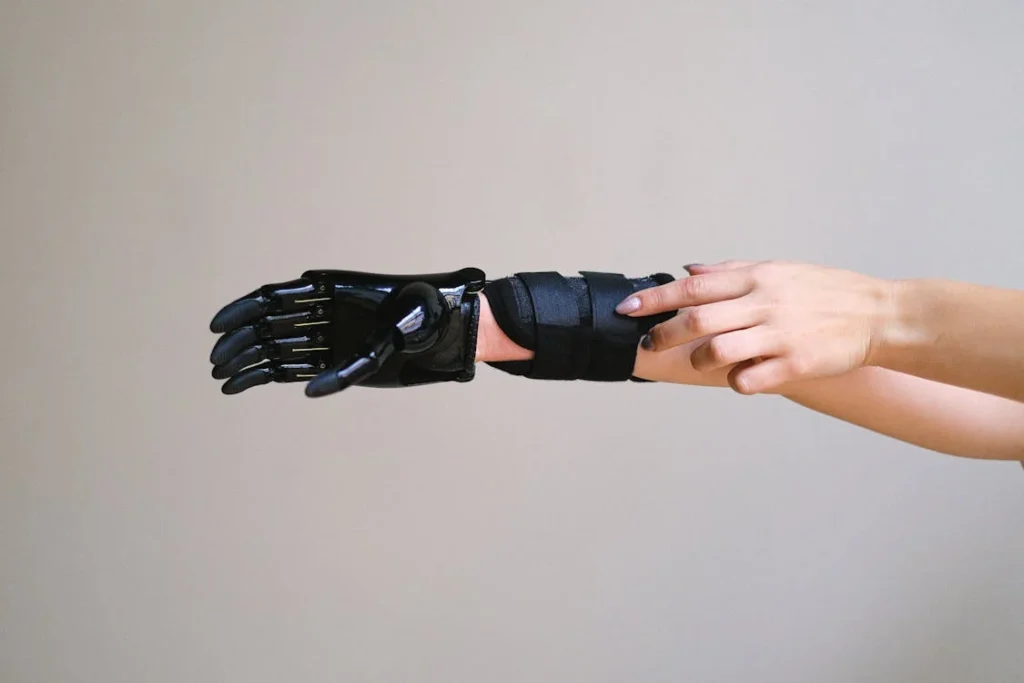
How Bionic Hands Became Precision Tools
The Shift from Bulk to Balance
Let’s rewind just a bit. The first wave of modern prosthetics was all about strength. The goal was to help users lift, grasp, and move heavier objects without relying on others.
These early hands were motorized, often bulky, and prioritized power over control. And while they were groundbreaking at the time, they came with limits. Movements were clunky. Grips were all-or-nothing. And fine motor skills? Not really an option.
Then something happened. Engineers, scientists, and prosthetists started listening more closely to what users actually needed. And what they heard was loud and clear—users didn’t just want to hold things.
They wanted to feel in control again. They wanted to zip up jackets, open soda bottles, swipe through photos on a phone, or chop vegetables without fearing the knife might slip.
That’s where precision came in.
The focus shifted. Instead of just designing a powerful machine, the new mission became designing something that could mimic the natural movement of the human hand. A tool that didn’t just act—but reacted. Smoothly. Gently. Instinctively.
Smarter Sensors, Smarter Hands
Modern bionic hands come packed with sensors. These sensors detect tiny changes in muscle activity, even subtle shifts in tension or intention. The result? A prosthetic that responds to you in near real-time. You don’t have to force a command. You simply think it—and the hand follows your lead.
For example, EMG (electromyography) sensors read electrical activity from your residual muscles. When you flex just a little, the hand knows. Whether you want to pinch, grasp, or release, it adapts automatically. This isn’t science fiction—it’s everyday reality for thousands of users.
Some hands even have adaptive grip control. That means if you pick up an egg, the hand senses how delicate the item is and adjusts pressure accordingly. If you lift a shopping bag, it knows to firm up and hold tight. It’s intelligent assistance that feels natural.
A New Kind of Movement: Multi-Articulating Fingers
Another leap in precision came when engineers gave each finger its own motor. Older models used a single motor to open and close the entire hand. That worked well for grabbing things—but not so well for anything more delicate.
Now, with multi-articulating designs, each finger moves independently. You can point, pinch, tap, wave, or cradle. You can even make gestures or perform everyday tasks that need fine movement, like typing or using cutlery.
For people who’ve lost a limb, this isn’t just about mechanics. It’s about regaining confidence. Dignity. And full participation in daily life.
Design That Understands Human Behavior
Precision doesn’t stop at movement. It also shows up in how these hands are designed to work with you—not against you.
Modern bionic hands are lighter, quieter, and more balanced. That makes them easier to wear all day without strain. Some are built with breathable materials that adapt to different climates. Others use touch-sensitive surfaces, so you can adjust settings with a simple tap or gesture.
And let’s not forget intuitive interfaces. Instead of flipping through a user manual every time you want to change modes, many bionic hands now sync with your smartphone. One tap and you can switch from “power grip” to “precision pinch” or “tripod grasp”—depending on what you’re doing. It’s quick. It’s easy. And it puts full control in your hands—literally.
Precision Is Not Just for the Lab—It’s for Real Life
You might think all this sounds great in a tech demo—but what about in real life? The truth is, precision changes everything for users.
Imagine trying to hold your child’s hand gently—without squeezing too hard. Or cooking dinner without dropping utensils. Or using a pen to write your name. These aren’t just tasks. They’re parts of life that connect us to others. That give us independence.
And with these new precision tools, bionic hand users are doing all of that—and more.
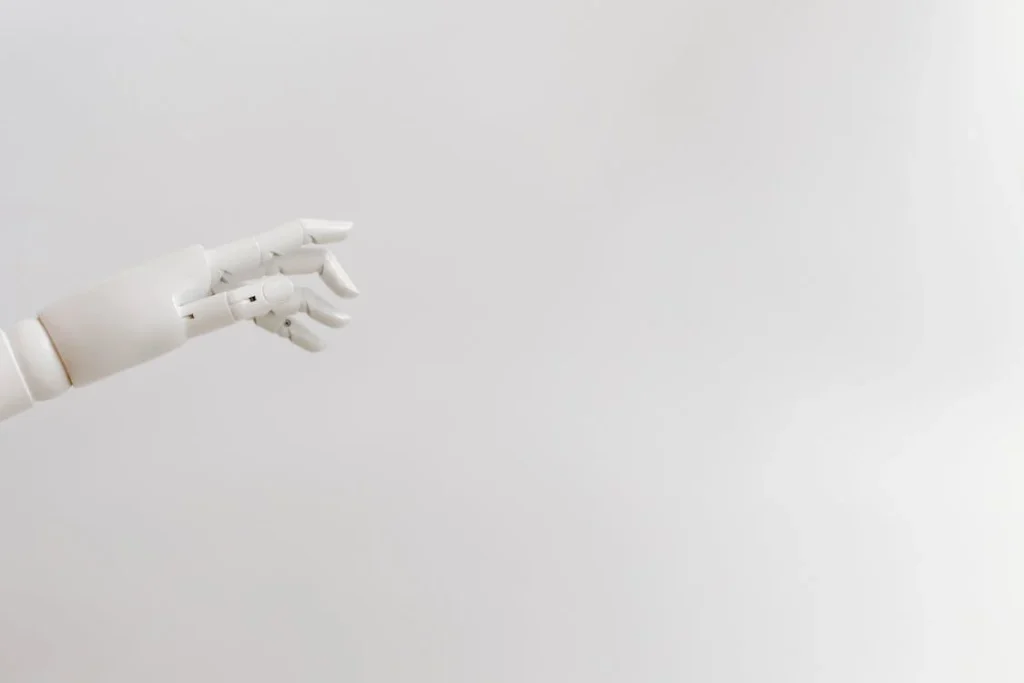
The Role of EMG Signals in Fine-Tuned Movement
Understanding EMG: Your Body’s Built-In Language
At the heart of every precision movement in today’s bionic hands is a silent conversation—one happening between your muscles and the prosthetic itself. This conversation relies on something called EMG, or electromyography.
It might sound complex, but the idea is beautifully simple: every time you move—or even think about moving—your muscles fire off tiny electrical signals. These signals travel through your skin and can be picked up using sensors.
Here’s where it gets powerful. Bionic hands can read those EMG signals and interpret what you want to do. Want to open your hand? The system senses that muscle contraction and opens the fingers. Want to point, pinch, or grip? The hand follows suit. No buttons. No switches. Just natural, intuitive control.
And because everyone’s muscles and movement patterns are different, modern systems can be custom-trained to understand your body’s unique signal language. That means over time, the hand becomes even more responsive, adapting to how you naturally move.
From Delayed Response to Instant Feedback
One of the biggest complaints with older prosthetic systems was the lag. You’d think about moving, but the hand would respond a second too late—or worse, misinterpret what you meant. That gap between intention and action could be frustrating. It made tasks feel robotic. Unnatural.
But with the latest advances in EMG signal processing, that delay has all but vanished. Bionic hands now respond in real time. And because they’re getting smarter at filtering out “noise” (random muscle signals that don’t mean anything), they’re far more accurate.
That instant feedback loop changes everything. You stop thinking about moving the hand—and simply start moving it. The artificial becomes natural again.
Personalized Grip Patterns That Fit Your Life
The beauty of EMG-controlled bionic hands isn’t just in their responsiveness. It’s in their adaptability.
Today’s hands can be programmed with different grip patterns—each tailored to real-life needs. Let’s say your day starts with brushing your teeth. Then making coffee. Typing on a laptop. Later, you cook dinner or ride a bike. Every one of those activities demands a different grip, speed, or pressure.
With EMG control, switching between these grips is seamless. Some hands do it automatically, learning from your movements and choosing the right pattern. Others let you tap your prosthetic or swipe your phone to change modes instantly.
The point is: you don’t need to adapt to the hand—it adapts to you.
What This Means for Everyday Life
All of this tech might sound impressive on paper—but what matters is how it plays out in the real world.
Let’s talk about independence. Tasks that once required help from someone else—buttoning a shirt, unlocking a door, opening a jar—are now within reach. Literally. And not just in a “sort of works” way, but in a way that feels smooth, confident, and reliable.
Let’s talk about employment. With finer control, bionic hand users are better equipped to handle jobs that require typing, precision handling, or frequent multitasking. That opens doors to professions that were once off-limits. We’ve seen users go from being limited in the workplace to becoming baristas, graphic designers, engineers, and more.
Let’s also talk about mental well-being. Feeling capable again—feeling like your body listens to you—is deeply empowering. It reduces dependency. It rebuilds self-esteem. And it puts you back in charge of your life.
Why This Is Just the Beginning
The EMG systems we have today are incredible. But research continues to push the envelope. Scientists are working on integrating AI-driven learning into these systems—so that the hand learns your behavior patterns and predicts what you’ll do next, even before you fully flex your muscle.
We’re also seeing early breakthroughs in bi-directional feedback. That means not only will the hand respond to your muscle signals, but it will also send sensation back to your nervous system. Imagine feeling the texture of an object in your hand.
Or knowing how firmly you’re gripping something just from the pressure alone. That’s where we’re headed—and it’s closer than you think.
What’s certain is this: bionic hands are no longer reactive tools. They’re becoming interactive partners. They don’t just follow orders—they understand intention. And that changes the entire game.
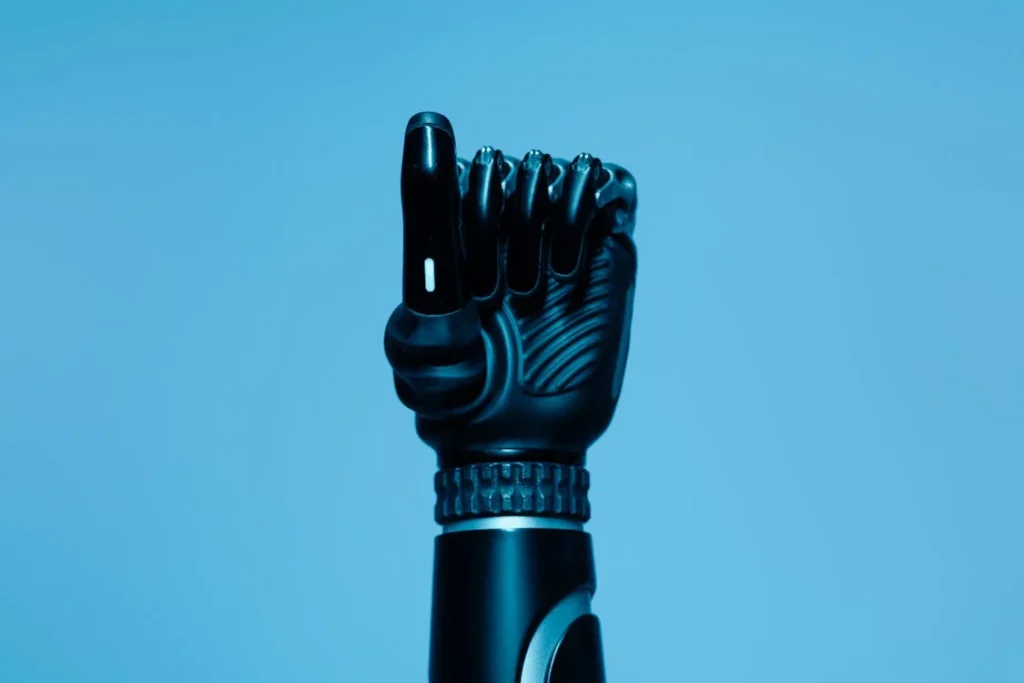
How Precision in Bionic Hands Is Redefining Independence
Doing More Than Ever—Without Thinking Twice
The best kind of technology is the kind you stop noticing. It fades into the background and simply becomes part of your everyday rhythm. That’s exactly what’s happening with the newest generation of bionic hands.
They’re not clunky tools that require effort to manage. Instead, they offer fluid motion, smart adaptability, and quiet confidence.
Whether it’s pouring a glass of water or handling delicate items like paper or electronics, users can now do more, without pausing to calculate every move. It’s this effortless functionality that makes modern bionic hands feel less like machines—and more like an extension of the body.
This isn’t about getting by. It’s about thriving.
True Independence in Real Life Moments
Let’s take a moment to look at daily routines. The kind of tasks that pile up quietly—but define how freely you live.
In the morning, you make breakfast. Hold a spoon. Crack an egg. Spread butter on toast. Then you might hop on a scooter or drive to work, tapping into your phone’s GPS along the way. Once at your desk, you type, hold a cup of tea, and answer messages.
These aren’t extreme tasks. But they used to be challenging—even stressful—for prosthetic users. That’s because older models didn’t offer the kind of responsiveness and subtlety needed for daily flexibility. There was always a workaround. Or a compromise.
But with precise, intuitive motion in bionic hands today, all that’s changed.
People are using scissors. They’re grooming pets. They’re painting. They’re parenting—bathing their children, tying shoelaces, and holding tiny hands during school drop-offs.
These are the things that bring us joy and a sense of control in life. Now, they’re possible again, thanks to the small, deliberate movements precision tech allows.
Making Work More Accessible—And More Rewarding
Precision doesn’t just affect your personal life. It shapes your professional life too.
Jobs that require accuracy, repetition, or multitasking were once considered out of reach for someone using a prosthetic hand. But today, we see more users stepping into roles that demand finesse—like working in retail, hospitality, healthcare, or tech.
Some are writing code. Others are running businesses. We’ve even seen creators filming content, holding cameras, or editing clips on laptops. That’s the power of precision—you don’t just regain function; you regain opportunity.
For employers, this also brings an important shift. Precision-enabled bionic hands remove barriers and reduce the need for constant assistance or custom workflows. It levels the playing field and creates more inclusive workplaces. That’s good for everyone.
Emotional Freedom: Feeling Normal Again
Independence isn’t just about what you can do with your hands—it’s also about how you feel while doing it.
There’s a psychological weight that comes from constantly needing help. From standing by while others open packages, zip up your coat, or carry things for you. That weight quietly chips away at confidence.
Precision changes that.
When a bionic hand allows you to take back those tiny moments, the emotional impact is massive. You stop feeling like a spectator and start feeling like yourself again. You become more social. You go out more. You stop hesitating. That’s not just mobility—it’s emotional freedom.
Many users share that one of the best things about modern bionic hands is that they allow them to blend in. Not because they want to hide their limb difference, but because they want to be defined by what they do—not by what they’ve lost. And now, with responsive, smooth movement, they can do just that.
For Kids and Young Adults, the Possibilities Are Endless
Let’s talk about one of the most powerful areas where precision bionic hands are changing lives: childhood.
Kids are naturally curious. They want to explore, play, and learn through touch. But if a prosthetic doesn’t respond the way they need it to, they pull away—or worse, they start avoiding tasks altogether. That leads to developmental delays, frustration, and low self-esteem.
Now, with lightweight, multi-grip bionic hands, kids are thriving.
They’re building with blocks. Riding bikes. Drawing pictures. Playing video games. They’re learning new motor skills instead of falling behind. And because many of these hands now come with simple training apps and mobile controls, kids can adjust grip types themselves and learn through play. It’s empowering. It’s practical. And it sets them up for a stronger future.
For teens and young adults, this kind of control is especially important. It gives them autonomy in school, in sports, and in their social lives. And with models that allow for personal design or customization, they can express their identity too—not just function, but style.
It’s Not a Gimmick—It’s a Game-Changer
Sometimes people assume bionic hands with multiple grips and EMG controls are “luxury” options. Something nice to have, but not essential. That couldn’t be further from the truth.
These hands don’t just look advanced. They restore essential functions. They give people back control over their time, their energy, and their dignity. They reduce reliance on others. They make it possible to do more, with less effort. That’s not a luxury—it’s a need.
And as this technology becomes more affordable and more available, it’s important that we continue to highlight its value. Because for someone living with limb loss, the ability to move smoothly, naturally, and confidently isn’t just a feature. It’s the foundation of an independent life.

The Tech Behind Precision: How Engineering Makes It Possible
Motors That Do More Than Move
If you look inside a modern bionic hand, you’ll find one of the biggest reasons it can move with such accuracy: its motors.
Earlier versions of prosthetic hands used a single motor to open and close all fingers at once. That limited what users could do. There was only one kind of motion, and it couldn’t be changed based on the task.
Now, each finger in a bionic hand can have its own miniature motor. That means fingers can move individually—or work together in more complex ways. Want to make a thumbs-up? You can.
Want to pick up a coin from a flat surface? That’s possible too. This independent finger movement is what gives users real control. It’s not just about opening and closing. It’s about shaping your hand to match your intent.
These motors are also more efficient and quiet than before. They don’t drain power as fast, and they don’t make distracting mechanical sounds. That makes the entire experience smoother and more comfortable, especially in professional or social settings.
Microprocessors That Read You Like a Book
Behind every smart motion is an even smarter processor. Think of this as the “brain” inside the hand.
Modern bionic hands use microprocessors to take input from sensors—like EMG signals—and decide how to move. These chips don’t just respond to muscle signals. They interpret them. They compare patterns. They decide how much force to apply, how fast to move, and which grip to activate.
And here’s the really exciting part: many of these processors now come with machine learning capabilities. That means they get better over time.
The more you use the hand, the more it understands your habits. It learns your most-used gestures and adjusts grip timing and strength accordingly. The more you live your life, the more the hand keeps up.
This kind of smart adaptation is what turns a prosthetic from a tool into a partner. It doesn’t just do what you say—it predicts what you need.
Battery Life That Matches Your Day
No matter how smart a hand is, it’s not useful if it dies halfway through your day. That’s why today’s bionic hands now come with longer-lasting batteries and better energy management systems.
Newer models are designed to last all day with regular use. You can work, eat, shop, play, and commute—without worrying about power running out. And charging systems have improved too. Some hands now charge wirelessly. Others use magnetic connectors, so there’s no fumbling with cables. Many give users full control through an app that shows battery level in real-time.
It’s about giving you freedom—not just for an hour, but all day long.
Materials Built for Life, Not Just the Lab
Engineering isn’t just about motion—it’s about durability and comfort too.
The materials used in bionic hands today are a big part of why they work so well. Earlier prosthetics were heavy and rigid. They didn’t always sit comfortably on the limb, especially after long periods of wear. That often led to fatigue or irritation.
Now, designers use lightweight composites, soft-touch surfaces, and even 3D-printed structures to create hands that are strong but light, firm but flexible. Some hands also offer modular wrist rotation or shock absorption, which makes them better suited for dynamic tasks like sports, lifting, or travel.
And because they’re easier to wear, people are more likely to wear them longer—and make the most of their functionality.
Software That Puts You in Control
Precision doesn’t only come from hardware—it’s also in the software that powers the entire experience.
Many bionic hands now come with companion apps. These let users do things like:
- Recalibrate grip patterns on the fly
- Save custom settings for different tasks (e.g., “cutting vegetables” or “cycling”)
- Update firmware to get new features
- Check system diagnostics, battery life, and signal strength
Some apps even use visual guides or gamified interfaces to help new users learn faster. You can practice motions, test your grip strength, or train the hand to better understand your EMG signals—all from your phone.
This level of control means you’re never stuck with a “one-size-fits-all” setting. You can fine-tune the hand to match your day, your lifestyle, and your pace.
Design That Supports Confidence
Let’s not forget the power of aesthetic design. Today’s bionic hands aren’t just precise—they look modern, stylish, and even futuristic. That matters.
For years, prosthetic hands were designed to hide. They mimicked the human hand, but never quite looked natural. Many users felt they had to choose between something functional or something discreet.
But now, people are embracing the look of bionics. Sleek black carbon fiber. Brushed metal. Transparent joints. Hands that look like tech—not just a replacement for skin.
Some users even customize their bionic hands with colors, decals, or LED lighting. It’s not just about function. It’s about personal expression. And when you wear something every day, being able to own that style is a big confidence booster.
At Robobionics, we see this shift as something beautiful. A celebration of ability—not just restoration.
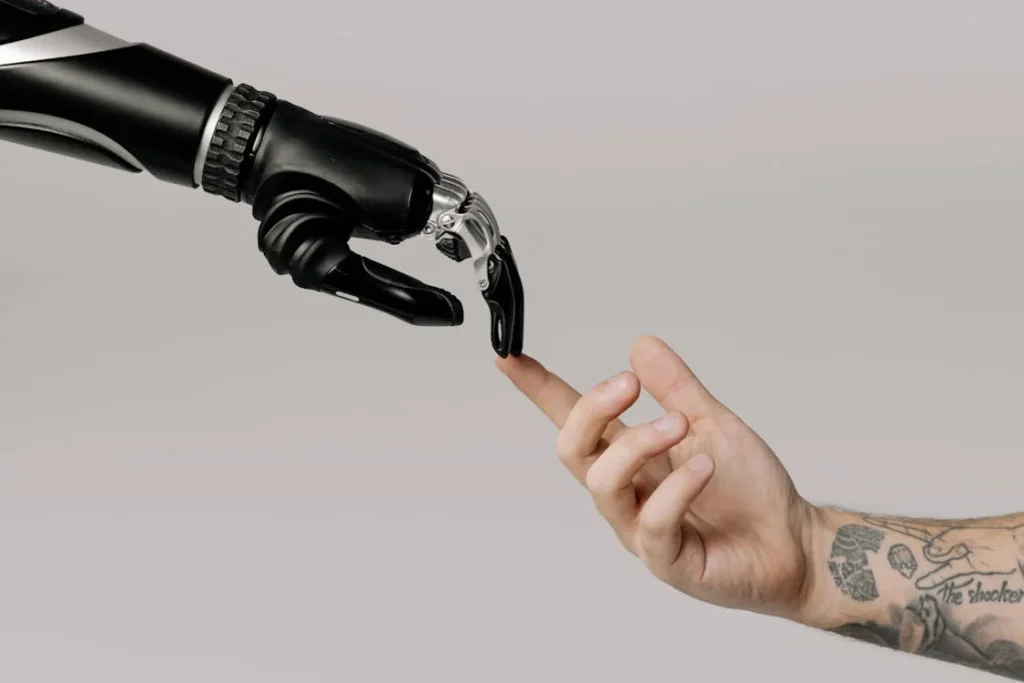
The Future of Precision: What’s Coming Next in Bionic Hand Technology
From Movement to Sensation: The Next Frontier
Right now, bionic hands are incredibly precise at movement. But what if they could let you feel again?
That’s where the future is heading. Engineers and neuroscientists are working on ways to bring sensory feedback into bionic hands. This would allow users to feel pressure, texture, temperature, and even vibration through the prosthetic—sending that information directly back to their nerves or brain.
This is known as haptic feedback or sensory restoration. It works by placing sensors on the fingers of the prosthetic. When those sensors detect something—a gentle press, a textured surface, or a heat source—they translate it into a signal the user’s nervous system can recognize. Some systems use electrodes placed on the skin. Others use implants or nerve interfaces.
Imagine gripping a soft sponge and being able to tell it’s soft. Or feeling the click of a button under your finger. Or knowing exactly how tightly you’re holding a glass. That kind of feedback makes actions safer, smoother, and more instinctive.
While still in development, some experimental models have already shown promising results. At Robobionics, we’re watching these advancements closely—and exploring ways to bring them into our own designs as soon as they’re ready for daily use.
Brain-Controlled Movement: Beyond Muscle Signals
EMG control is powerful—but what if the hand didn’t need to read muscle signals at all?
That’s the idea behind brain-machine interfaces (BMIs). These systems connect directly to a user’s nervous system—or even the brain itself—to read intent and move the hand accordingly. Instead of relying on residual muscles, the hand could move based on neural signals alone.
This means that even users with high-level amputations, limited residual limb strength, or conditions like ALS could regain control over a functional hand.
The tech behind this is still developing, but researchers are making huge strides. Some BMIs already allow users to move robotic arms using thought alone. Others are experimenting with non-invasive EEG caps that read brainwaves through the scalp.
While this kind of technology might sound futuristic, it’s coming faster than you think. And when combined with the precision mechanics already available, it could create a generation of bionic hands that respond almost as naturally as a biological one.
Smarter Hands with Built-In AI
Today’s bionic hands already learn and adapt over time. But in the future, they’ll become even more intelligent.
Artificial intelligence will allow hands to analyze past movements, recognize patterns, and predict what users want to do—even before they fully signal it. Let’s say you always pinch to pick up your house keys. After a few days, the AI will remember that pattern and automatically prep the hand for a pinch whenever you walk into the foyer.
Some hands may even integrate context awareness. Using visual or audio sensors, they could detect the object in front of them and adjust grip type or pressure accordingly. For example, if the hand sees a coffee mug, it would go into power grip mode. If it sees a credit card, it might prep a lateral pinch.
This kind of smart assist takes the pressure off the user. You won’t have to think through every movement. The hand will quietly understand what needs to be done—and help you do it.
More Natural Design and Integration
As materials continue to improve, we’ll also see bionic hands that feel more natural against the body. Think skin-like textures, self-healing materials, and adaptive fit systems that adjust to swelling or weather changes.
Some systems may even integrate with the rest of the body. For instance, we could see prosthetics that connect to wearable smart devices, so that a hand reacts to your calendar, your fitness app, or your home automation system. Imagine turning off the lights or locking your door with a gesture alone.
These features won’t just add convenience. They’ll create a seamless human-tech experience. No more stopping to adjust settings or switch modes. The hand becomes part of how you move through the world.
Better Access, Better Affordability
Of course, none of these advancements matter if people can’t access them. That’s why the future of precision bionic hands must also include better affordability and wider reach.
At Robobionics, one of our biggest missions is to make high-quality, precision prosthetics available to more people—especially in India, where cost can often be a barrier. We’re investing in scalable production, local sourcing, and modular designs to keep costs down without sacrificing quality.
We also believe education and awareness are key. Many people still don’t know that modern bionic hands can do so much. By working closely with hospitals, physiotherapists, and prosthetic clinics, we’re helping to bring this information to the people who need it most.
Precision shouldn’t be a luxury. It should be the standard.
What This Means for You—Right Now
Even if all this futuristic tech is still developing, today’s bionic hands already offer incredible precision. They help people write, cook, care for their families, and live independently. They let users pursue careers, hobbies, and passions. They rebuild confidence. And they do it quietly, reliably, and beautifully.
If you or someone you know is exploring the idea of getting a bionic hand, know this: you’re not just getting a replacement for what was lost. You’re gaining a precision-built tool designed to move with you, learn from you, and adapt to the life you want to live.
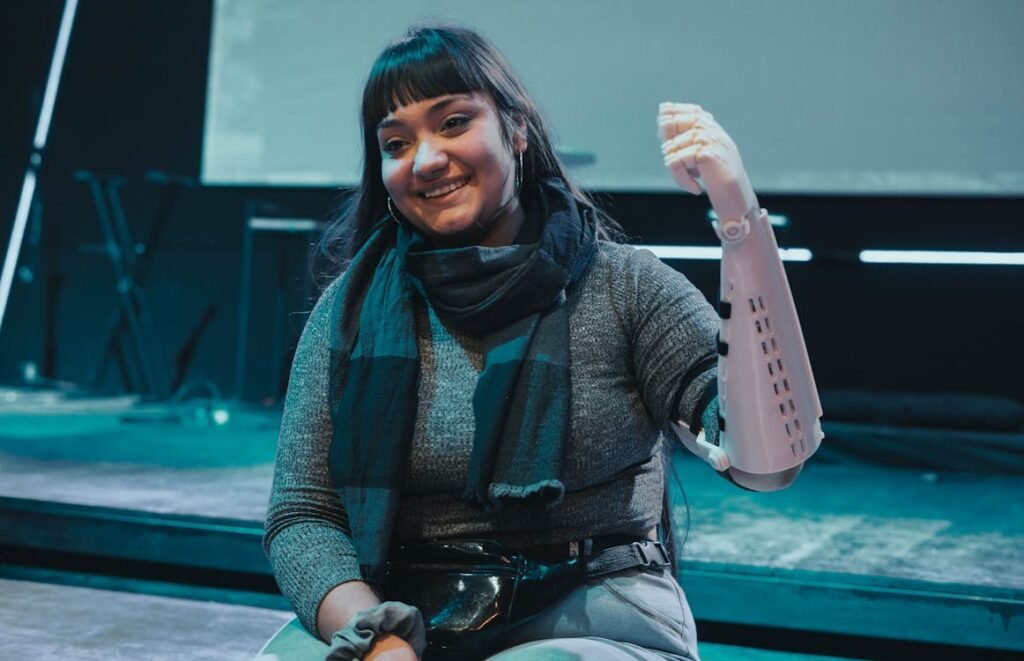
Conclusion
Bionic hands today aren’t just about replacing what was lost—they’re about empowering what’s possible.
With intelligent sensors, individual finger control, and movement that responds naturally to your intent, these hands now function as true precision tools. They help people regain confidence, independence, and control in everyday life. From tying shoelaces to typing emails, holding a child’s hand to cooking dinner—each motion becomes smoother, simpler, and more human.
At Robobionics, we believe prosthetic technology should evolve with you. It should adapt to your pace, support your goals, and feel like an extension of who you are—not just what you had.
As we look ahead, even greater innovations are coming. But right now, precision is no longer a promise—it’s already here.
Your future isn’t limited by what you’ve lost. It’s shaped by what’s possible. And with the right hand, almost anything is.



